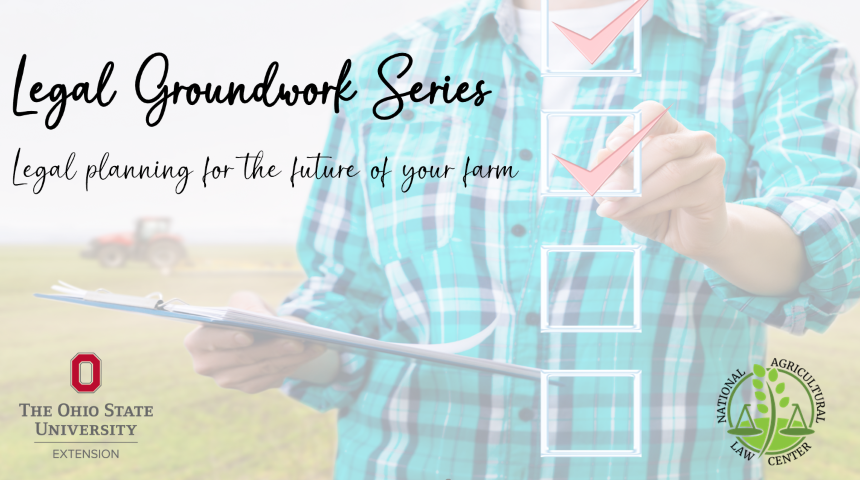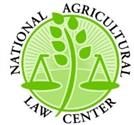Ohio’s Beginning Farmer Tax Credit Program aims to help level the playing field for beginning farmers in Ohio. It does so by providing income tax benefits for both a beginning farmer and someone who transfers farm assets to the beginning farmer. The new program first became available for the 2023 tax year, and sunsets on January 1, 2028, or when total income tax credits granted amount to $10 million. Participating in the program requires good planning, so now is the optimal time for existing and beginning farmers to consider how best to utilize the program while program funds are still available.
Our law bulletin, Ohio’s Beginning Farmer Tax Credit Program, can help guide planning efforts. The bulletin explains how the program works and outlines the process for qualifying for the program’s income tax credits. That process includes:
1. Meeting eligibility requirements to become certified by the Ohio Department of Agriculture (ODA) as a “qualified beginning farmer.” The first step, then, is to determine whether an individual can meet the eligibility requirements, which are:
- A resident of Ohio.
- Seeking entry to or has entered farming within the last 10 years.
- Farming or intending to farm in Ohio.
- Has a total net worth of less than $800,000 in 2021, including spouse and dependent assets, as adjusted for inflation each year.
- Provides the majority of the daily physical labor and management for the farm.
- Has adequate farming experience or knowledge in the type of farming the individual is conducting.
- Submits projected earnings statements and demonstrates profit potential.
- Demonstrates farming will be a significant source of income for the individual.
- Is not a partner, member, shareholder, or trustee of the assets the individual is seeking to purchase or rent.
- Completes an ODA-approved financial management course.
2. Completing training and applying to ODA for certification as a “qualified beginning farmer.” One component of attaining the program’s eligibility requirements is completing a financial management course, which an individual who meets all other program requirements must do before applying to ODA to become certified. OSU Extension offers two of the 12 ODA-approved financial management programs an individual can complete to meet the training requirement.
- After completing an eligible financial management course, the individual must submit an application to ODA’s Office of Farmland Preservation to be approved as a qualified beginning farmer. The application requires submitting information and documentation showing that the individual meets the eligibility requirements.
- If ODA approves the application, the individual will receive a state income tax credit certificate for the amount paid for completing the financial management course. The qualified beginning farmer can use the tax credit on the current year’s tax return and can carry it forward for three succeeding tax years.
- A list of eligible financial management courses and the application to become a qualified beginning farmer are on the ODA website at https://agri.ohio.gov/programs/farmland-preservation-office/Beginning-Farmer-Tax-Credit-Program.
3. Transfer of agricultural assets to a qualified beginning farmer. The program also creates a financial incentive for owners who sell or rent agricultural assets to an individual who has been certified as a qualified beginning farmer, as long as the beginning farmer is not a partner, member, shareholder, or trustee with the owner of the agricultural assets. The asset owner will receive an Ohio income tax credit equal to 3.99% of the asset sale price or gross rental income received during a calendar year for a cash or share rental lease, and can carry the credit forward for up to seven years.
- “Agricultural assets” include land in agricultural production (10 or more or if under 10 acres, earning $2500 in average annual gross income from agriculture), livestock, facilities and buildings, and machinery (but not if the owner of machinery is an equipment dealer).
- A sale of assets must occur in the same calendar year the owner applies for the tax credit.
- In the case of a rental of assets, the credit can be claimed over the first three years of the lease.
4. Application for a tax credit by the asset owner. To receive the 3.99% income tax credit, the asset owner must submit a Beginning Farmer Tax Credit Asset Transfer Form application to ODA. The asset owner must submit a copy of the qualified beginning farmer’s certification certificate with the application, which is available on the ODA website at https://agri.ohio.gov/programs/farmland-preservation-office/Beginning-Farmer-Tax-Credit-Program. If ODA approves the application, the Ohio Department of Taxation will issue a tax credit certificate to the asset owner.
It is important for both the beginning farmer and the agricultural asset owner to understand the process for qualifying for the income tax credits the new program offers. Timing is critical, as the beginning farmer must complete the training and become certified as a qualified beginning farmer before a transfer of agicultural assets occurs. It’s also important for existing asset owners to coordinate program participation with estate and transition plans. Now is the time to consult with professional advisors and begin planning for program participation for the 2024 tax year.
Learn more about the Beginning Farmer Tax Credit Program in our law bulletin, available in the tax law library on https://farmoffice.osu.edu/our-library/tax-law and by visiting the ODA’s website at https://agri.ohio.gov/programs/farmland-preservation-office/Beginning-Farmer-Tax-Credit-Program.


 It’s time to round up a sampling of legal questions we’ve received the past month or so. The questions effectively illustrate the breadth of “agricultural law,” and we’re happy to help Ohioans understand its many parts. Here’s a look at what has come our way:
It’s time to round up a sampling of legal questions we’ve received the past month or so. The questions effectively illustrate the breadth of “agricultural law,” and we’re happy to help Ohioans understand its many parts. Here’s a look at what has come our way:

